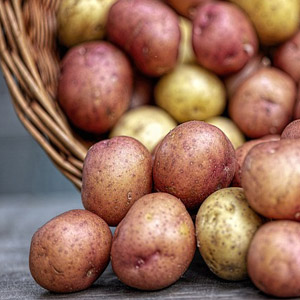Screening of endophytic bacteria from potato tubers and their antagonistic activity against soil-borne potato pathogens

Accepted: December 12, 2022
All claims expressed in this article are solely those of the authors and do not necessarily represent those of their affiliated organizations, or those of the publisher, the editors and the reviewers. Any product that may be evaluated in this article or claim that may be made by its manufacturer is not guaranteed or endorsed by the publisher.
Authors
In order to appraise the bacterial endophyte communities that help resist disease in potato tuber, the separation, the population density, biodiversity and the antagonistic activity of endophytic bacteria, from the tuber peel of potato cultivars (Fontan90, Agria, Sante’a and Jeli89), were examined in the Fars province in Iran. In this study, the bacterial endophyte Colony Forming Units (CFU) were counted based on the most suitable dilution in petri dishes and expressed per g of wet weight of tuber tissue. The presence of bacteria was found mostly in the outer layer. A wide variety of endophyte species biodiversity was in Agria cultivar. To estimate the antagonistic effect of potato associated endophytic bacteria, 115 bacterial isolates were evaluated by dual culture method against main soil-borne potato pathogens Fusarium oxysporum, Rhizoctonia solani, Verticillium dahliae, Streptomyces scabies and Ralstonia solanacearum. Endophyte strains were identified based on physiological, morphological and chemical characteristics and the 16S rRNA gene sequence analysis. The highest degree of the inhibitory activity in all layers of potato cultivars was related to Bacillus subtilis, Bacillus mojavensis and Klebsiella variicola. Antagonistic activity of endophytic bacteria against the pathogens was significantly higher (p<0.01) in the examined strains from the outermost layer of tuber peel and decreased progressively toward the center of the tuber. In this research, Klebsiella variicola was reported as endophyte bacteria in the four commercial potato cultivars mentioned above, for the first time.
How to Cite

This work is licensed under a Creative Commons Attribution-NonCommercial 4.0 International License.
PAGEPress has chosen to apply the Creative Commons Attribution NonCommercial 4.0 International License (CC BY-NC 4.0) to all manuscripts to be published.

 https://doi.org/10.4081/jbr.2023.10625
https://doi.org/10.4081/jbr.2023.10625



